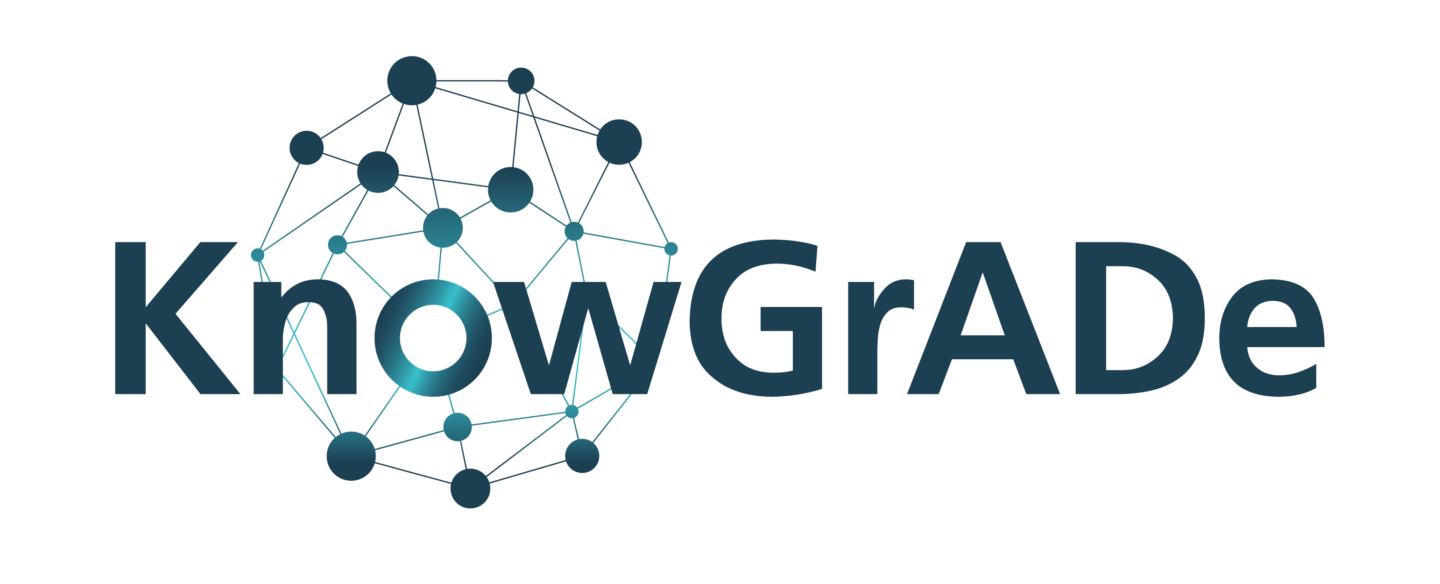KnowGraADe research project
Orchestra transfers production data into a visual knowledge graph for anomaly detection

About the KnowGrADe research project
Nowadays, as a manufacturing company, the digitalization of your own production is more important than ever before. This is because the recorded data is full of knowledge that can bring the company enormous progress – provided it is used correctly.
This is where the KnowGrADe research project funded by the Bavarian Research Foundation comes into play:
In order to optimize production operations in companies, innovative software modules are being developed as part of the project. These modules should make it possible to flexibly integrate production data from different sources and in different formats into a knowledge graph. This graph visualizes the corresponding correlations and links from the data sources.
Parallel to the creation of the graph, anomaly detection is carried out in order to identify anomalies or deviations in the supplied production data. If an anomaly is detected, the knowledge graph is used to identify possible correlations.
This procedure is ultimately intended to detect faults, quality problems and rejects in production at an early stage and solve them effectively. In the best case scenario, problems can be identified before they even occur.
Composition of the consortium
The following institutions have joined forces to realize the research project, which is characterized by an extremely high practical relevance:
- Fraunhofer IGCV (Projektleitung)
- Berger Holding GmbH & Co. KG
- COSMINO AG
- Hirschvogel Automotive Group GmbH
- soffico GmbH

Why is a knowledge graph used for the project?
A knowledge graph is a structured database or network that represents information in the form of networked entities and their relationships. The aim is to organize knowledge and capture complex relationships between data that are easily accessible and interpretable for humans and machines. A knowledge graph connects data points by describing entities (e.g. people, places, objects) and the relationships between these entities. In this way, complex relationships and connections can be easily visualized and mapped.
It is precisely this visualization of the data that is essential for the research project, as it makes it easier to identify connections in the graphical representation in the event of an anomaly occurring.

The role of soffico in KnowGrADe
Our Orchestra low-code data integration platform is used to integrate all the data available in the research project into a knowledge graph. As middleware for data integration and data transformation, Orchestra is able to process and homogenize a wide variety of data formats and thus map them in a graph.
Orchestra is used in the project to transfer the production data of Berger Holding GmbH & Co. KG and Hirschvogel Automotive Group GmbH into a graph database (Neo4J Aura) so that the Fraunhofer (IGCV) can then carry out cause-and-effect analyses. These are controlled by the anomaly detection of an autoencoder, which is designed to detect deviations in the process data.
The challenge
Advancing digitalization enables comprehensive data collection in companies. This data can be used to improve production quality and efficiency. However, until now, specialized software systems have mostly been used for specific issues (e.g. quality management software, energy management systems). As a result, data is stored in system-inherent data silos. Synergies between different systems and the associated data have so far been insufficiently utilized.
This is mainly due to the high initial implementation effort involved in manually linking the data silos and establishing causal relationships between the applications. At the same time, the data silos also cause a great deal of effort for employees when it comes to obtaining information, for example when they have to determine relevant reasons for system malfunctions.
Core objectives of KnowGrADe
The research project aims to develop a flexible and easily expandable system architecture for a knowledge graph that enables information and knowledge to be derived from production data and used to solve technical production issues. This involves creating special knowledge models that can detect and specifically analyze the causes of faults, quality deviations and rejects in production operations.
The aim is to detect damage in future before it actually occurs or has an impact.
Innovative software modules will also be used to ensure the simple integration of new data sources so that the architecture can be flexibly transferred to new production applications.
This solution forms the basis for
Markus Benndorff
